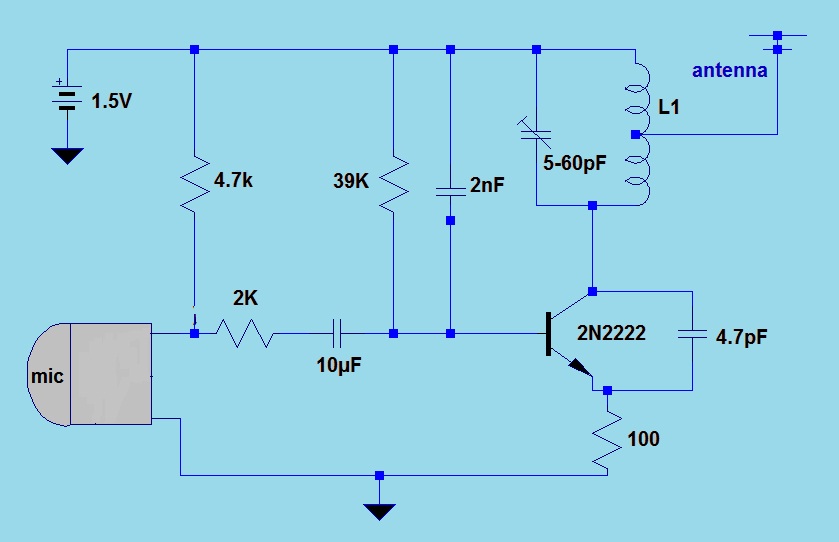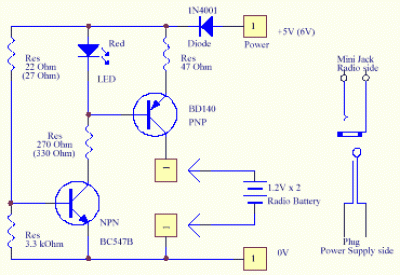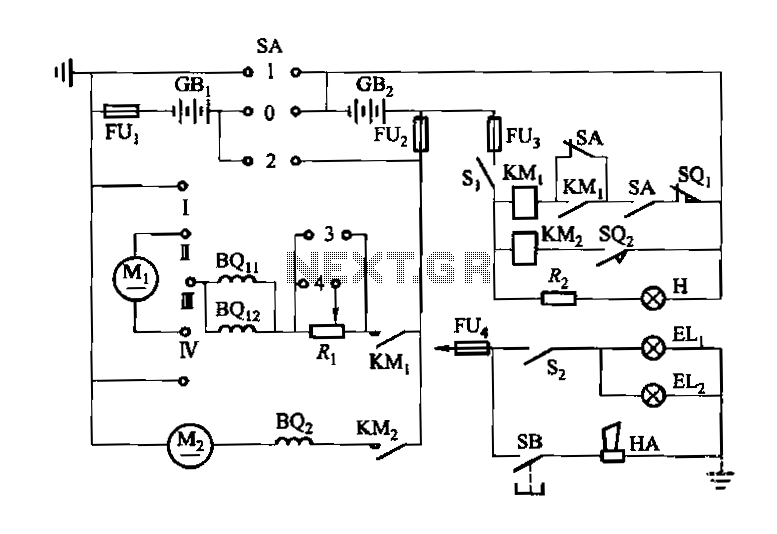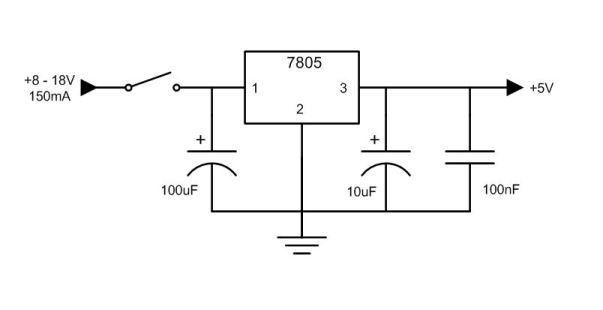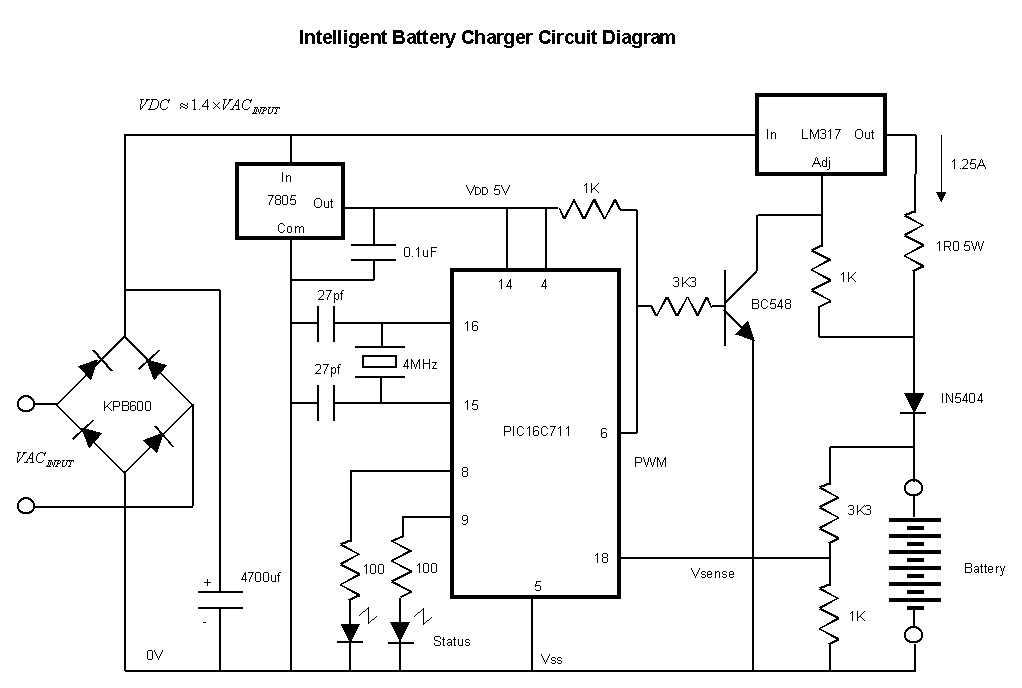
NiCd Battery Charger
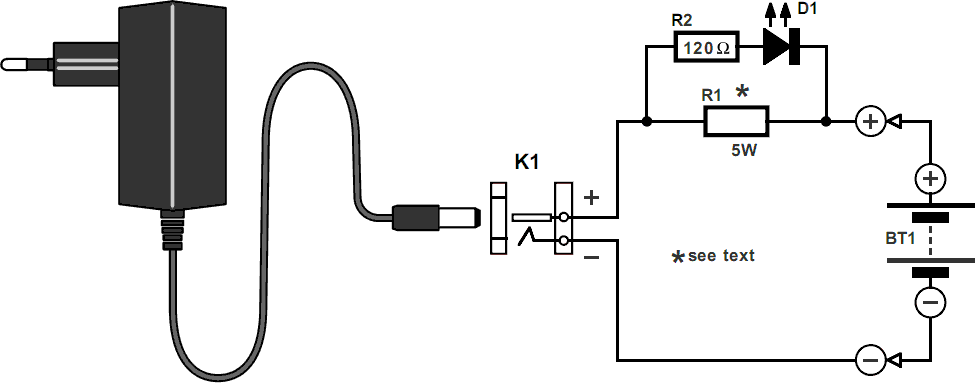
The charger design is akin to many commercially available chargers. It comprises a mains adapter, two resistors, and a light-emitting diode (LED). In practical applications, this type of charger functions effectively. Resistor R1 serves dual purposes: it sets the appropriate charging current and reduces the voltage sufficiently to illuminate the diode. This indicates that the LED lights up only when a charging current flows into the battery. The charging current is approximately one-quarter of the battery's capacity, which allows for slight overcharging while keeping the charging cycle relatively short (4 to 5 hours). The resistor values can be calculated based on the nominal electromotive force (e.m.f.) and the battery's capacity. The mains adapter output should be adjusted to 1.17 times the nominal battery voltage plus 3.3 V, which represents the voltage across R1. It is essential that the adapter can supply a current of at least half of the battery's capacity. The value of R1 in ohms is calculated as 3.3 divided by one-quarter of the battery capacity. A table provides the resistor values for various battery voltages, assuming a battery capacity of 1 Ah. R1 should have a power rating of 5 W. If the battery to be charged has a different capacity, the theoretical value of R1 from the table must be adjusted by dividing it by the battery capacity, with the actual value being the closest standard resistor from the E12 series. For example, for a 6 V battery with a nominal capacity of 600 mAh, R1 must be 20/0.6 = 33 ohms.
The charger circuit is designed for efficient battery charging, utilizing a simple yet effective configuration. The mains adapter provides the necessary input voltage, which is converted into a suitable output for charging the battery. The charging process is indicated by the LED, which illuminates when the charging current is active, offering a visual confirmation of the charging status.
Resistor R1 plays a critical role in determining the charging current; it is essential to select R1 based on the specific battery capacity to ensure optimal charging. The calculation of R1 is crucial, as it directly impacts both the charging current and the voltage drop required for LED operation. The adjustment of the mains adapter output to 1.17 times the nominal battery voltage plus the additional voltage drop across R1 ensures that the battery receives the correct voltage for charging.
The second resistor in the circuit, which is not explicitly detailed, may serve as a current limiting or voltage dividing element, depending on the specific design requirements. The power rating of R1 is particularly important, as it must withstand the heat generated during operation without failing. A 5 W rating is specified to provide a safety margin, ensuring that R1 operates within safe thermal limits.
In practical applications, the charger circuit can be adapted for various battery types and capacities by recalculating R1 and possibly adjusting other components. The use of standard resistor values from the E12 series simplifies component selection, allowing for easy sourcing and implementation in prototype and production environments. Overall, this charger design demonstrates a balance between simplicity, effectiveness, and adaptability for different battery charging scenarios.The design of the charger is similar to that of many commercially available chargers. The charger consists of a mains adaptor, two resistors and a light-emitting diode (LED). In practical use, this kind of charger is perfectly all right. Resistor R1 serves two functions: it establishes the correct charging current and it drops sufficient voltage t o light the diode. This means that the LED lights only when a charging current flows into the battery. The charging current is about 1/4 of the battery capacity, which allows a slight overcharging, and yet the charging cycle is not too long (4 5 hours). The value of the resistors may be calculated as follows, for which the nominal e. m. f. and the capacity of the battery must be known. Adjust the output of the mains adaptor to 1. 17 times the nominal battery voltage plus 3. 3 V, which is the potential across R1. Note that the adaptor must be capable of supplying a current of not less than half the battery capacity.
The value of R1 in ohms is equal to 3. 3 divided by 1/4 of the battery capacity. The value of the resistors for various battery voltages is given in the Table. The battery capacity is taken as 1 Ah. The rating of R1 should be 5 W. If the battery to be charged has a different capacity, the theoretical value of R1 in the table must be divided by the battery capacity. Its actual value is the nearest one in the E12 series. For instance, if a 6 V battery with a nominal capacity of 600 mAh is to be charged, the value of R1 must be 20/0.
6 = 33R. 🔗 External reference
The charger circuit is designed for efficient battery charging, utilizing a simple yet effective configuration. The mains adapter provides the necessary input voltage, which is converted into a suitable output for charging the battery. The charging process is indicated by the LED, which illuminates when the charging current is active, offering a visual confirmation of the charging status.
Resistor R1 plays a critical role in determining the charging current; it is essential to select R1 based on the specific battery capacity to ensure optimal charging. The calculation of R1 is crucial, as it directly impacts both the charging current and the voltage drop required for LED operation. The adjustment of the mains adapter output to 1.17 times the nominal battery voltage plus the additional voltage drop across R1 ensures that the battery receives the correct voltage for charging.
The second resistor in the circuit, which is not explicitly detailed, may serve as a current limiting or voltage dividing element, depending on the specific design requirements. The power rating of R1 is particularly important, as it must withstand the heat generated during operation without failing. A 5 W rating is specified to provide a safety margin, ensuring that R1 operates within safe thermal limits.
In practical applications, the charger circuit can be adapted for various battery types and capacities by recalculating R1 and possibly adjusting other components. The use of standard resistor values from the E12 series simplifies component selection, allowing for easy sourcing and implementation in prototype and production environments. Overall, this charger design demonstrates a balance between simplicity, effectiveness, and adaptability for different battery charging scenarios.The design of the charger is similar to that of many commercially available chargers. The charger consists of a mains adaptor, two resistors and a light-emitting diode (LED). In practical use, this kind of charger is perfectly all right. Resistor R1 serves two functions: it establishes the correct charging current and it drops sufficient voltage t o light the diode. This means that the LED lights only when a charging current flows into the battery. The charging current is about 1/4 of the battery capacity, which allows a slight overcharging, and yet the charging cycle is not too long (4 5 hours). The value of the resistors may be calculated as follows, for which the nominal e. m. f. and the capacity of the battery must be known. Adjust the output of the mains adaptor to 1. 17 times the nominal battery voltage plus 3. 3 V, which is the potential across R1. Note that the adaptor must be capable of supplying a current of not less than half the battery capacity.
The value of R1 in ohms is equal to 3. 3 divided by 1/4 of the battery capacity. The value of the resistors for various battery voltages is given in the Table. The battery capacity is taken as 1 Ah. The rating of R1 should be 5 W. If the battery to be charged has a different capacity, the theoretical value of R1 in the table must be divided by the battery capacity. Its actual value is the nearest one in the E12 series. For instance, if a 6 V battery with a nominal capacity of 600 mAh is to be charged, the value of R1 must be 20/0.
6 = 33R. 🔗 External reference

